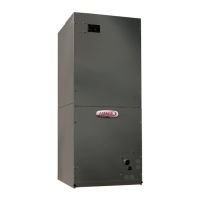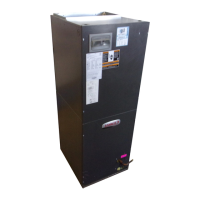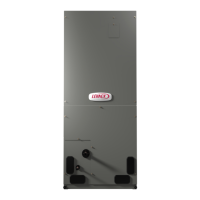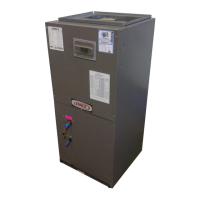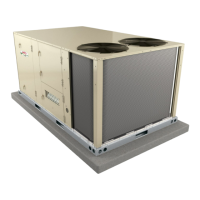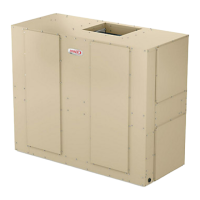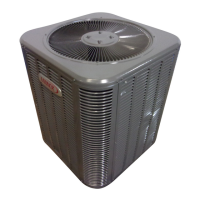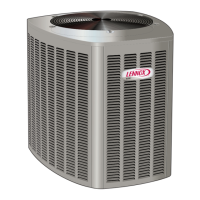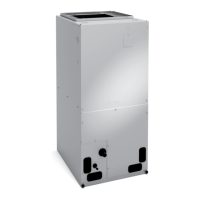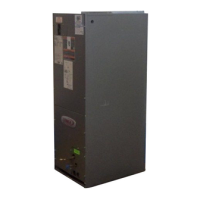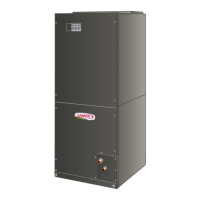9
Refrigerant Piping Connections
Field piping consists of two copper lines connected to the
indoor unit. Table 2 lists the connection sizes at the indoor
unit. Both lines must be individually insulated.
Size (Btuh) Liquid Line Vapor Line
VVCA018-054 3/8” 5/8”
Table 2. Refrigerant Piping Connections
Figure 10. Relocate T-1 Sensor
16. Relocate T-1 Sensor to be downstream of the coil to
sense room air temperature.
Figure 9. Route Wiring Harness Through Coil and
Into Electrical Compartment
17. Secure T-1 sensor to “top of coil” brace.
18. Re-secure the wiring harness using clips and wire
ties. Do not pinch or bind wires.
19. Reconnect the T2 and T2B sensors.
20. Reconnect the wire harness plug inside of electrical
control box.
21. Turn the coil compartment cover 180° and reattach to
the unit cabinet.
22. Reattach the blower compartment panel.
IMPORTANT
The compressor in the unit this air handler is matched
with contains PVE oil (Polyvinyl ether). PVE oil is
formulated for hydrouorocarbon (HFC) refrigerants,
such as R410A, which this system contains. While it may
have some miscibility properties with mineral-based oil
and POE oil (Polyolester), it is not recommended to mix
PVE oil with any other type of refrigerant oil.
Refrigerant leaks are unlikely; however, if a refrigerant
leak occurs, open a door or windows to dilute the
refrigerant in the room. Turn o the unit and all other
appliances that may cause a spark. Call a licensed
professional HVAC technician (or equivalent) to repair
the leak.
Use only R410A refrigerant to charge this system. Use
of other refrigerant or gas will damage the equipment.
Do not allow air or other contaminants to enter system
during installation of refrigerant piping. Contaminants
will result in lower system capacity and abnormally high
operating pressures and may result in system failure or
explosion.
Insulate all refrigerant piping.
Refrigerant pipes may be very hot during unit operation.
Do not allow contact between wiring and bare copper
pipes.
After refrigerant piping connections have been
completed, check the system for leaks per commissioning
instructions.
WARNING
IMPORTANT
Always use two wrenches when tightening are nuts to
avoid twisting refrigerant piping. DO NOT over-tighten
are nuts.
IMPORTANT
Flared connections should always be accessible and
must be insulated to prevent condensation.
IMPORTANT
Support ALL piping within 12 in. (305 mm) of any
mechanical tting such as a ared connection.

